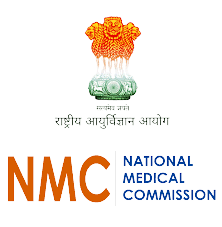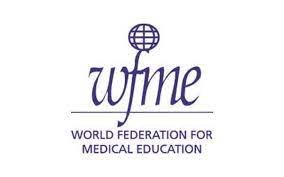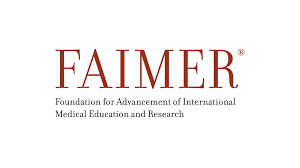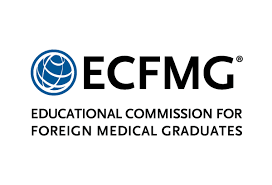
Overview
Samara State Medical University is a distinguished institution with an extensive profile, including:
The esteemed teaching staff comprises 622 members, featuring 14 academicians and corresponding members from various academies, 100 professors and PhDs, and 386 assistant professors.
International Focus
Since 1991, Samara State Medical University has actively engaged with the international community. Key points include:
Current Status
The university currently hosts more than 6,000 students, with around 900 of them being international.
Goals and Objectives:
Global Mission
“We create the future of medicine by developing high technologies and preserving the traditions of academic education for sustainable development, training highly qualified specialists, and improving people’s health and quality of life.”
Strategic Goal
“Leadership in the creation of advanced scientific knowledge, world-class educational technologies, development, and implementation of the best innovative solutions in practical healthcare.”
Samara State Medical University stands as a beacon for medical education, combining tradition with innovation to shape the future of healthcare.
Overview
Samara, known as Kuybyshev from 1935 to 1991, stands as the largest city and administrative center of Samara Oblast in Russia. Nestled at the confluence of the Volga and Samara rivers, it boasts a population of over 1.14 million residents, with up to 1.22 million in the urban agglomeration, excluding Novokuybyshevsk. Covering an expansive area of 541.382 square kilometers, Samara ranks as the eighth-largest city in Russia and the tenth-largest agglomeration. It holds the distinction of being the third-most populous city on the Volga and is a prominent part of the Volga Federal District.
Former Closed City to Present
Once a closed city, Samara has transformed into a significant social, political, economic, industrial, and cultural center in Russia. The city played host to the European Union—Russia Summit in May 2007. Samara boasts a continental climate marked by hot summers and cold winters.
Connection to the Volga River
The life of Samara’s citizens is intricately tied to the Volga River, serving as Russia’s main commercial thoroughfare for centuries and providing visual allure. Samara’s riverfront is a key recreational site for both locals and tourists.
Climate Overview
Samara experiences a humid continental climate, classified as Köppen climate Dfb, with some characteristics bordering on Dfa. The city’s climate is influenced by its proximity to the Volga River and is characterized by distinctive seasons.
Seasonal Humidity
Samara’s humidity levels exhibit variations throughout the year. The summer months, in particular, witness higher humidity compared to many other Russian cities. This is attributed to the influence of precipitation levels and the city’s close proximity to the Volga River. Over the course of a year, humidity levels typically range from 29% to 98%.
Temperature Extremes
Climate Classification
Samara falls under the humid continental climate classification, indicating warm summers and cold winters. The proximity to the Volga River plays a crucial role in shaping the city’s climate dynamics.





Program Details:
Climate:
Accreditation and Recognition:
Cultural and Religious Context:
Degree Information:
1. MCI Authorization:
2. Qualified Professionals:
3. Modern Facilities:
4. No Donation Requirement:
5. Learning Environment:
6. Research and Development:
7. Affordable Quality Education:
8. Access to Resources:
9. Research Programs:
10. Advanced Degrees:
11. Career Preparedness:
12. English-Medium Instruction:
13. Cost-Effective Campus:
1. World-Class Educational Environment:
2. Laboratories:
3. Extracurricular Engagement:
4. Year-Round Recreation Program:
5. Diverse Recreational Activities:
6. Fully Furnished Hostels:
7. Safety Measures:
8. Internet Connectivity:
| Year/Semester | Courses |
|---|---|
| 1st Year | |
| Semester 1 | Anatomy |
| Semester 2 | Anatomy & Histology |
| 2nd Year | |
| Semester 3 | Histology, Biochemistry, Anatomy, Physiology |
| Semester 4 | Biochemistry, Microbiology, Physiology |
| 3rd Year | |
| Semester 5 | Pathology, Pharmacology, Microbiology, Pathophysiology |
| Semester 6 | Pathology, Pathophysiology, Pharmacology, Genetics and Principles of Clinical Medicine |
| 4th-6th Year | |
| Semester 7-12 | General Surgery, Primary Care Medicine, Oncology, Psychiatry, Pediatrics, Cardiology, ENT, Neurology, Obstetrics and Gynecology, Internal Medicine, Neurology and Psychiatry, Psychology, Emergency Medicine |
Eligibility criteria for MBBS admission at the University adhere to the guidelines set by the National Medical Commission (NMC) for Indian students. The requirements are outlined below:
Academic Performance:
NEET Qualification:
Age Requirement:
Hostel Accommodation:
Diverse Community Living:
Hostel Management:
Facilities for Academic and Physical Development:
Self-Cooking Facilities:
Well-Furnished Rooms:
Convenient Location:
Step 1: Initial Counseling
Step 2: Submission of Application
Step 3: Payment of Application Fee
Step 4: University Admission
Step 5: payment of 1st year Tuition Fees
Step 6: payment of Visa Processing & Documentation Charges
Step 7: Invitation Letter
Step 8: Visa Application
Step 9: Payment of Consultancy Service Charges
Step 10: Purchase of Air Ticket
Step 11: Document Safety
Step 12: Airport Reception and Briefing
Step 13: Arrival and Enrollment
Documents Required:
To ensure a smooth MBBS admission process Indian students are required to submit the following documents. Please note that all documents must be translated into Russian and duly certified at a consular department of the embassy (This will be taken care by RICH GLOBAL EDU)
Educational Documents:
NEET Exam Related:
Identification and Travel Documents:
Photographs:
Health and Safety Documents:
Ensuring that these documents are properly translated and certified is crucial for a successful application process.
Tution Fees Per Year: 4000 USD
Hostel Fee, Medical Insurance, Visa Extension: 1500 USD
Notably, any one-time charges have been excluded for simplicity and ease of understanding.
*Food/Indian Mess Cost = 100 to 120 USD Per Month
Additional Expenses only in 1st year
| Expense Component | Cost (INR) |
|---|---|
| Application Fees | INR 10,000 |
|
Documentation & Visa Processing Charges This includes:
|
INR 1,00,000 |
| Consultancy Charges | INR 50,000 |
| Air Ticket | INR 30,000 – INR 40,000 |
Countries for MBBS Abroad
Top Universities for MBBS
FAQs
MBBS in Moldova
MBBS in Nepal
MBBS in USA
© 2024 Rich Global Edu